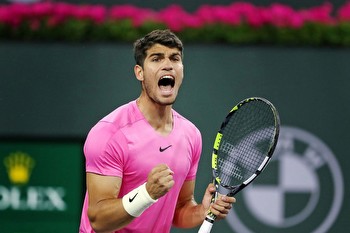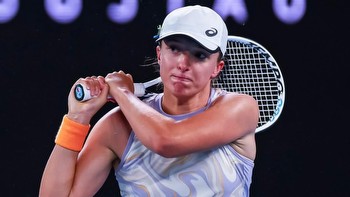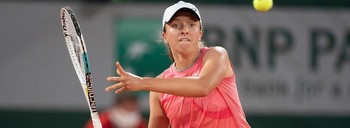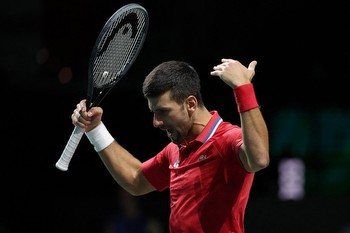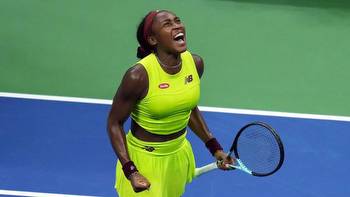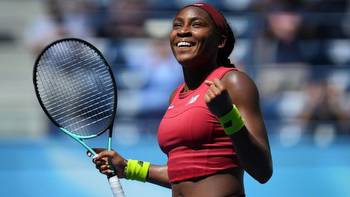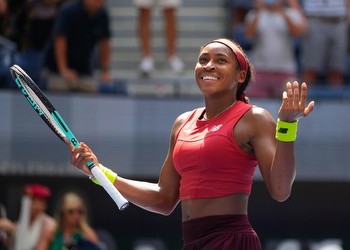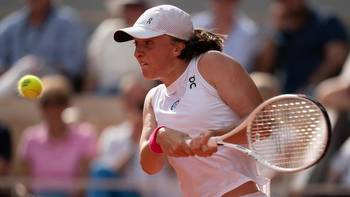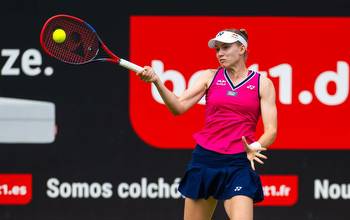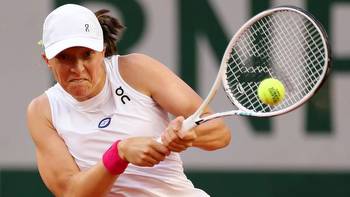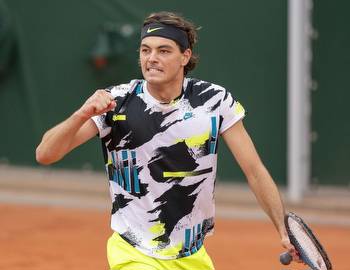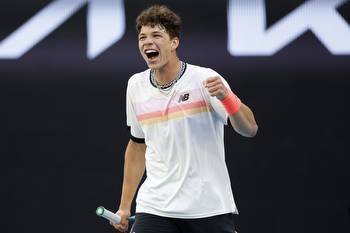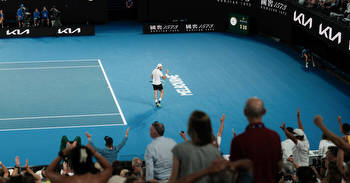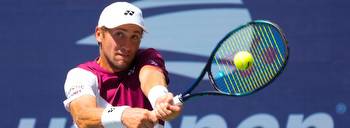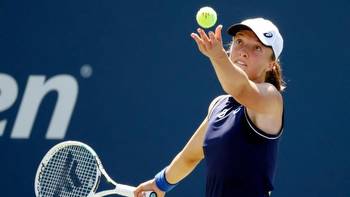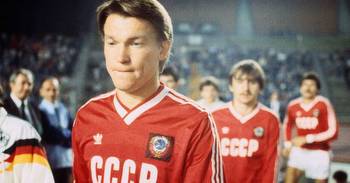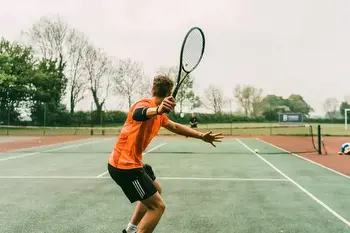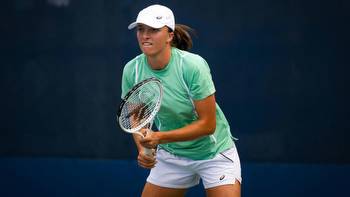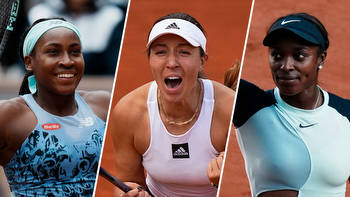Why Eastern Europe has become better at tennis than the U.S.
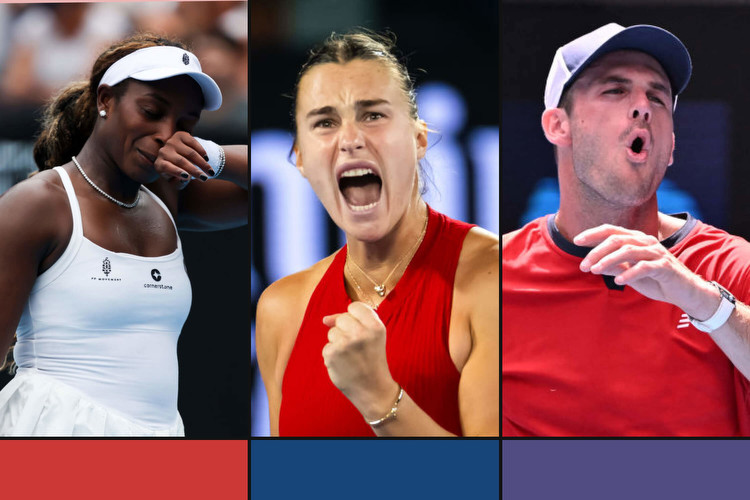
The schedule on Rod Laver Arena on Tuesday afternoon had two quarterfinal matches with plenty of import for tennis fans, especially in the United States and Eastern Europe.
There were big names on the court – Coco Gauff, the 19-year-old U.S. Open champion, and Novak Djokovic, the 24-time Grand Slam champion. In Marta Kostyuk of Ukraine and Taylor Fritz of the U.S., they faced two players trying to punch their way into the upper echelon of the sport.
The underdogs didn’t make any progress on that front. Gauff survived her worst performance in months, a mistake-filled, error-strewn afternoon. Fritz has long struggled against Djokovic and is now 0-9 against arguably the greatest man to play tennis.
But pull back the lens a bit, view this tournament from 30,000 feet, and it becomes the latest chapter in a story that has been evolving for more than two decades, a tale of the sport’s power center shifting from west to east for reasons that mostly involve elements of opportunity and desire.
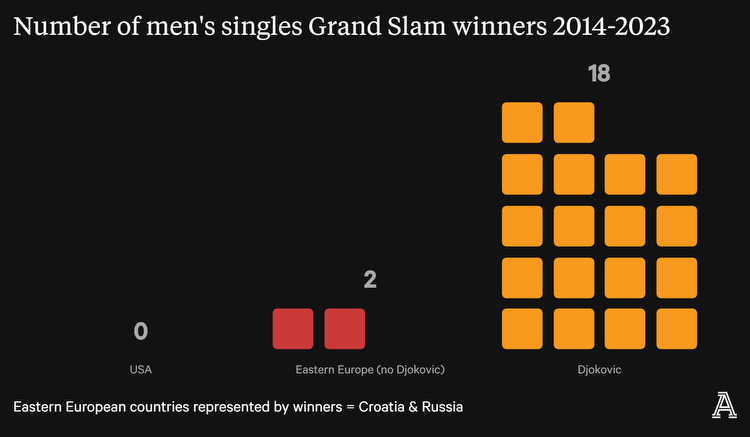

“You grow up in some of these countries and you’ve got to win to survive and these players will die on a tennis court,” said Rennae Stubbs, the former Grand Slam champion from that once great tennis power Australia who has spent years living in the U.S. “If you’re from a place like the U.S. or Australia, chances are your life is pretty comfortable and you have to dig to find that inner mongrel part of your personality.”
That is a generalization of course. Plenty of people in the U.S. struggle economically and use sports to escape those challenges, fighting tooth and nail every step of the way. And yet it’s hard to watch Djokovic, the product of the war-ravaged Balkans, and so many other players who entered the sport without much of a safety net and not notice an inner fire that burns very hot.
“I’m from Ukraine,” Kostyuk said earlier in the tournament. “I like to fight.”
That’s part of it. This is the rest.
How it used to be
Once upon a time, there was a sport that was played almost entirely on grass and red clay. Men wore trousers and ties. Women wore long dresses. Most of them had a good deal of money. This was a sport of the elite, played mostly in Great Britain and Western Europe, Australia, and the United States.
After the Second World War, that notorious Iron Curtain fell across Europe, with socialist governments in the east, many of them puppet states of the Soviet Union. They did not hold the hobbies of the Western elite in particularly high regard. Tennis was popular among the educated class of the former Czechoslovakia, a country that had tried to break away from Soviet rule and played some tennis, but the sport did not exist in a large or meaningful way in much of the rest of the east.
By 1984, following the tennis boom of the 1970s and America’s burgeoning suburban middle-class population, American dominance of the sport had become nearly absolute. Tennis academies were appearing throughout Florida, especially the famous Nick Bollettieri Tennis Academy in Bradenton, soon to be the IMG Academy, where future world No 1s Andre Agassi and Jim Courier would cut their teeth.
At the U.S. Open that year, there were 68 American men and 68 American women in the singles draws.
Last year, there were 16 men and 23 women in the U.S. Open singles competitions and 10 of them needed wild cards to gain entry. The U.S. and the regions referred to as Eastern Europe have roughly the same number of people. The U.S. has about 330million. Eastern Europe has just under 300million. Eastern Europe has more than triple the number of U.S. women ranked in the top 50 and nearly double the number of men.
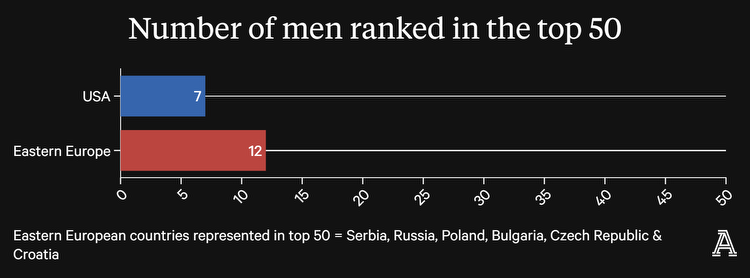

Sixteen men and women made the quarterfinals of the Australian Open this year. Ten were from Eastern Europe – 10.5 if you count Alexander Zverev, who is half-Russian. There were two Americans.
At the 1984 U.S. Open, there were six Americans and three Eastern Europeans, all from Czechoslovakia.
What happened?
The shift
Bollettieri was sitting on a bench outside Arthur Ashe Stadium a decade ago talking about the state of American tennis.
The women were doing just fine. Venus and Serena Williams were collecting armloads of trophies, inspiring young girls everywhere to pick up tennis rackets. The men were struggling. Everything had changed since the glory days of the 1990s when Courier, Agassi, Pete Sampras and Michael Chang had been mainstays of the top 10.
Bollettieri saw the change taking place on his doorstep. In the 1980s and 1990s, parents from Eastern Europe had begun showing up at his academy asking for him and his staff to evaluate their children and turn them into champions. One was Monica Seles, who was born in Belgrade, Serbia’s capital. Another was Maria Sharapova, who won Wimbledon aged 17 in 2005.
Eastern Europe was coming for tennis and the riches it could provide to its top stars at a time when legitimate professional work was hard to find.
“The world is a lot bigger place than it used to be,” Bollettieri, who died in 2022, said on that day at the U.S. Open.
It has got even bigger since.
Bulat Utemuratov boxed and played soccer and table tennis in his youth in Kazakhstan, a former Soviet republic that is in Central Asia, but just stick with us for a moment. In the 1990s, after the collapse of the Soviet Union, he served as both an economic envoy for Kazakhstan to Europe and the United Nations, the leader of one of the top financial institutions and a special aide to then-president Nursultan Nazarbayev. Nazarbayev ruled the country essentially as a dictator for three decades as it worked to modernize and take advantage of its vast oil reserves.
Utemuratov, who is 66, did not start playing tennis until Kazakhstan’s post-Soviet business community embraced it in the mid-1990s. Previously, he knew it as something the Kremlin frowned upon as a sport of the elite. There were only a handful of tennis courts in the entire country and playing on them was extremely expensive.
To Utemuratov, tennis was a revelation — a physical version of chess requiring versatility, intellectual wherewithal, maximum concentration and constant athletic improvement. When his country’s tennis federation nearly went bankrupt in 2017, he rescued it by investing roughly $200million — nearly a 10th of his estimated fortune — to construct 38 tennis centers in all 17 regions of the country. It trained hundreds of coaches and instructors and imported some from Europe.
Utemuratov even offered to train and develop Russian teenagers who were not getting the support they needed if they agreed to represent Kazakhstan. Elena Rybakina, born and raised in Moscow, won Wimbledon in 2022. Alexander Bublik, also born and raised in Russia, is ranked 27th in the world and has won nearly $6million in prize money.
The spread
As players from Eastern Europe and their families embraced the sport, former players and tennis enthusiasts saw an opportunity. Why let Florida have a monopoly on the academy business?
Niki Pilic, a star of the 1960s and ’70s from the former Yugoslavia, opened an academy in Germany. Other academies began to sprout in France and Spain.
Bollettieri’s academy, which brought together the best young players and forced them to compete against each other every day in a kind of tennis version of Lord of the Flies that supposedly steeled them for life on the tour, has been copied many times across Europe.
Rafael Nadal has an academy in Mallorca. Juan Carlos Ferrero, Carlos Alcaraz’s coach, has an academy in southern Spain. Riccardo Piatti, one of the world’s most highly regarded coaches, founded an academy in northern Italy. Patrick Mouratoglou, Serena Williams’ coach, who wanted to be a pro player but wasn’t good enough and went into coaching instead, runs an academy in southern France.
And catch up on our latest pieces
Now it wasn’t just the lucky few who could make their way across an ocean that got a chance to join an academy. European academies were within driving distance. Some actively recruited players from the new tennis hotbeds. European federations and agents began sending prospects there. Increasingly, they became known within the junior ‘tennissphere’ as the place to be for the best young players.
Gauff was 10 years old when Mouratoglou called her parents and asked if she wanted to come train with him in France, all expenses paid. Gauff, 19, is from Delray Beach, Florida, a region that does not lack tennis academies, but the chance to train in France was too good to pass up.
“He just picked the best of the best to kind of help fund our careers essentially,” Gauff said this week.
The Fruhvirtova sisters, Brenda, 16, and Linda, 18, were there, as well as many other prospects from across Europe. Gauff ended up spending six to eight weeks at the academy each year, learning how to play on red clay courts, which barely existed in Florida.
“That program kind of just exposed me to different ways to play,” Gauff said.
A changing game
Think on Gauff’s words for another beat.
“That program kind of just exposed me to different ways to play.”
For all of the success of American tennis in the 20th century, no one would ever accuse the U.S. of creating the most imaginative players.
Great athletes. Lots of power. Big serves. Big forehands. It worked for a long time, especially on hard courts and grass, which are fast and mostly favored serve-and-volley players with some power. Slow red clay, not so much.
But in the 2000s, the leaders of tennis decided the sport should be more uniform and not favor surface specialists. The hard courts and grass got slower. The clay courts got faster. Also, string and racket technology changed, allowing players to extend rallies with miraculous, point-saving shots that would have been impossible in the 1980s and 1990s.
Rushing the net went out of vogue because players were so good at passing from deep behind the baseline. Tennis now required players to think rather than rip their way through matches — “building points” as Martin Blackman, the head of player development for the United States Tennis Association (U.S.T.A), calls it.
It’s a style of play that favored players raised on the red clay that is so common in Europe, not the fast hard courts that dominate American tennis centers and playgrounds. The tennis heads in the U.S. were slow to catch up. The U.S.T.A. did not hire Jose Higueras, the esteemed Spanish coach and former player, until 2008. He spent the next several years flying some two million miles trying to teach American coaches how to think and teach differently.
It’s not a coincidence that until Ben Shelton, the son of a former pro, burst onto the scene a year ago, the best of the new generation of American men were Fritz, Tommy Paul and Frances Tiafoe, who were among the first crop of promising players the U.S.T.A. exposed this new style to when they were young teenagers.
“By 17, they’ve done three trips to Europe on clay, played junior French Opens, French junior qualifiers, done camps in Spain,” said David Nainkin, a longtime lead coach of player development for the U.S.T.A. “You got to develop and play these tournaments.”
The competition
“In a lot of countries, we’re the No 2 sport behind soccer,” Andrea Gaudenzi, the former Italian pro who now leads the ATP, said in Turin, Italy, at the ATP Finals in November.
Gaudenzi was not talking about the U.S. He was talking about Europe, especially central and Eastern Europe.
Depending on how one measures it, tennis is somewhere between the sixth and 10th most popular sport in the U.S. It has been losing athletes to soccer since the 1980s. American football, basketball and baseball have always gotten the lion’s share of top athletes. Now girls’ basketball and volleyball have become hugely popular, too. Lacrosse, field hockey, track and field, and golf also provide healthy competition for tennis.
The ethos of young American tennis players is often different as well. For many, success doesn’t necessarily look like a longshot bet on a professional career with no safety net. It looks like the security of a college scholarship and a valuable degree from a top Western university, something that may never enter the conversation for some players growing up in Eastern Europe.
It’s possible they’re too busy practising.

